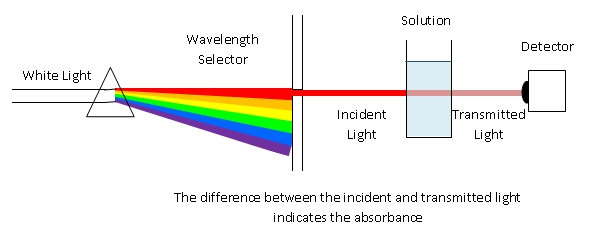The spectrophotometer is a routinely used instrument in scientific research. Spectrophotometry is the quantitative measurement of how much a chemical substance absorbs light by passing a beam of light through the sample using a spectrophotometer. In this video, basic concepts in spectrophotometry, including transmittance, absorbance and the Beer-Lambert Law are reviewed in addition to the components of the spectrophotometer. These concepts provide a foundation for how to determine the concentration of a solute in solution that is capable of absorbing light in the ultraviolet and visible range. Furthermore, a procedure for how to operate the spectrophotometer is demonstrated, including instructions on how to blank and measure the absorbance of a sample at the desired wavelength. The video also covers how to make a standard curve for determination of analyte concentration. Several applications of the spectrophotometer in biological research are discussed, such as measurement of cell density and determination of chemical reaction rates. Finally, the microvolume spectrophotometer is introduced, as well as its advantage in measuring the quality and quantity of protein and nucleic acids.
Introduction to the Spectrophotometer
6/3/2014
JoVE Science Education Database. General Laboratory Techniques. Introduction to the Spectrophotometer. Journal of Visualized Experiments, Cambridge, MA, doi: 10.3791/5038 (2014).






